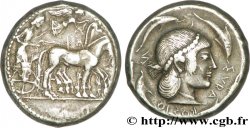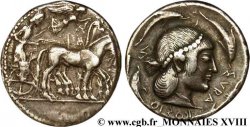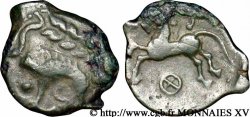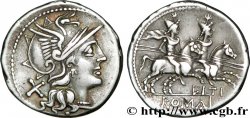- Accueil
- >
- >
v11_0024 - SICILY - SYRACUSE Tétradrachme
MONNAIES 11 (2002)
Starting price : 426.86 €
Estimate : 731.76 €
Realised price : 426.86 €
Starting price : 426.86 €
Estimate : 731.76 €
Realised price : 426.86 €
Type : Tétradrachme
Date: c. 480-475 AC.
Mint name / Town : Sicile, Syracuse
Metal : silver
Diameter : 24,5 mm
Orientation dies : 10 h.
Weight : 17,10 g.
Rarity : R2
Coments on the condition:
Flan légèrement irrégulier, échancré à 5 heures au revers avec une jolie patine de collection. Frappé avec un coin usé au droit
Catalogue references :
Obverse
Obverse legend : ANÉPIGRAPHE.
Obverse description : Bige au pas à droite, conduit par un aurige tenant les rênes et le kentron ; le bige est couronné par Niké volant à droite.
Reverse
Reverse legend : LÉGENDE AVEC LE A RÉTROGRADE.
Reverse description : Tête d'Aréthuse à droite, les cheveux relevés et retenus par un diadème de perles, entourée de quatre dauphins.
Reverse legend : SU-RAK-O-SIO-N
Commentary
Mêmes coins que l’exemplaire de l’American Numismatic Society (ANS. 37).







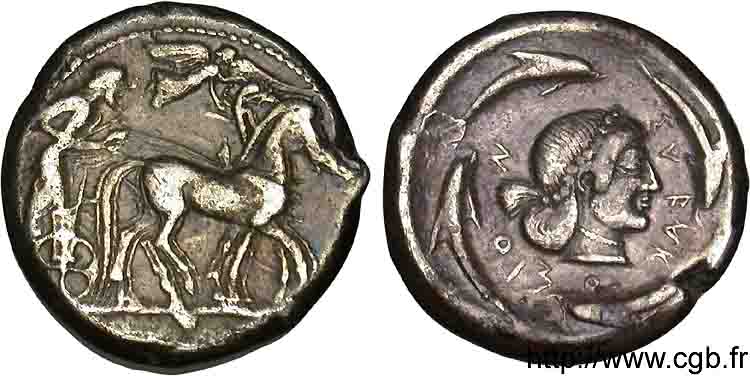
 Report a mistake
Report a mistake Print the page
Print the page Share my selection
Share my selection Ask a question
Ask a question Consign / sell
Consign / sell
 Full data
Full data
